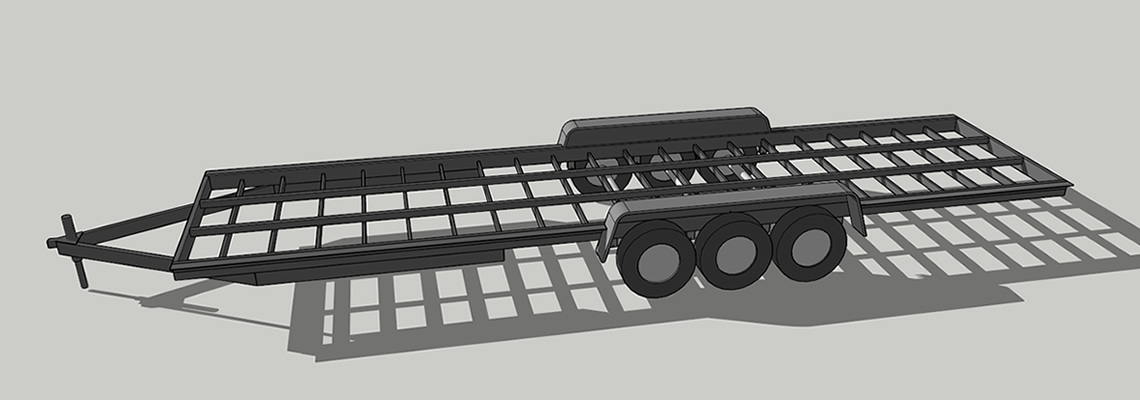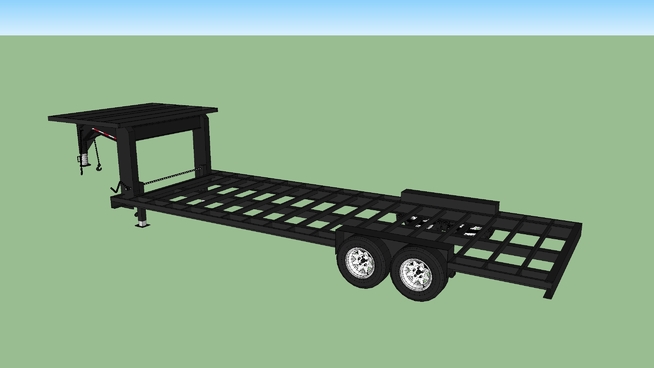Some of you may not know this, but Tiny Houses are often built on trailers – meaning they have wheels! They are also sometimes referred to as “Tiny Houses on Wheels.” That’s what a lot of people love about the idea of a Tiny House, is that it’s portable (sort of). However, when you think about the idea of moving your home, doesn’t that scare you a little bit? Yeah, me too. So obviously, it’s incredibly important to choose a good, strong, dependable trailer that is right for your use.
Weight Capacity
Dear God, please double check and triple check this. If you are in the market for a trailer and you plan on putting a house on it – doesn’t matter how small, it’s still a house – you need to know what the weight limit is on the trailer and on each axle. The last thing you need is to realize your house can’t be towed, or even worse, get into a terrible accident with it.
Length and Width
It’s important to look at the length and width of a trailer if you’re looking to purchase one for a Tiny House. The reason being is that depending on where you live, and what you plan to do with it, you will need to make sure that everything is legal. More on this later, as we go more into detail about trailer classification.
Type of Trailer
If you’ve done some research on tiny houses, you might have seen that not all tiny house trailers are the same. The most common type of trailer that is used to build tiny houses is an every-day utility trailer. This type of trailer is easy to find and is practical for tiny houses, as long as it meets all the weight requirements to support the build. Companies such as Tumbleweed Tiny House Company and Iron Eagle Tiny House Trailers build utility trailers specifically for tiny houses, some of which are made with lowered floors to maximize height; some of which are made to maximize width by extending the entire flatbed to the width of the wheel-wells.

The second type of tiny house trailers are the gooseneck trailers, which attach themselves into the box of a truck, as opposed to the regular utility trailers that attach to a ball hitch on the bumper of the truck. Gooseneck trailers are gaining popularity because a lot of people like the idea of having a taller “bedroom,” instead of a loft. You do have to keep in mind that you need a truck with the appropriate attachment to transport these types of trailers.

Trailer Classification
In New Brunswick – please note that this may vary in every province – we have learned that there are 3 different options for you to classify your trailer and your Tiny House. Each of these options are distinctive and have different requirements in regards to transportation and registration.
-
Plated Trailer – RV
This would be the best choice of classification if you wanted to move around with your Tiny House. In New Brunswick, you can classify your Tiny House as a Recreational Vehicle, and to have this classification, you must register your trailer just like you would any other trailer, at your local Department of Motor Vehicle office. In order to get a trailer registration, your trailer needs to have a valid inspection, which means the break lights and turning signals must work, and the tires must be in good condition.
If you choose this classification, there are limitations on the width of the trailer (8’6”), as well as the height of the Tiny House (13’6”). The maximum length is not usually taken into account, because it is much longer than what most people want for the dimensions of their Tiny House. You cannot exceed these dimensions if you wish to remain in this classification.
-
Seasonal Home – Special Permit
If you classify your Tiny House as a seasonal home, you still need a registration for your trailer, but it is trip-specific. This mean that every time you would move your Tiny House, you would have to reapply for a permit to transport it.
The advantage of doing this – especially if you plan on keeping your Tiny House in the same spot for a while – is that the maximum dimensions are bigger than a simple plated trailer. With a special permit from the Department of Transportation, you can extend your width to 10 feet.
-
Seasonal Home – Special Permit & Escort
As mentioned above, if you choose to classify your Tiny House as a seasonal home, you will still need trip-specific registration, as well as a special permit. But if you also have an escort, you have the advantage of being able to extend your width up to 12 feet.

